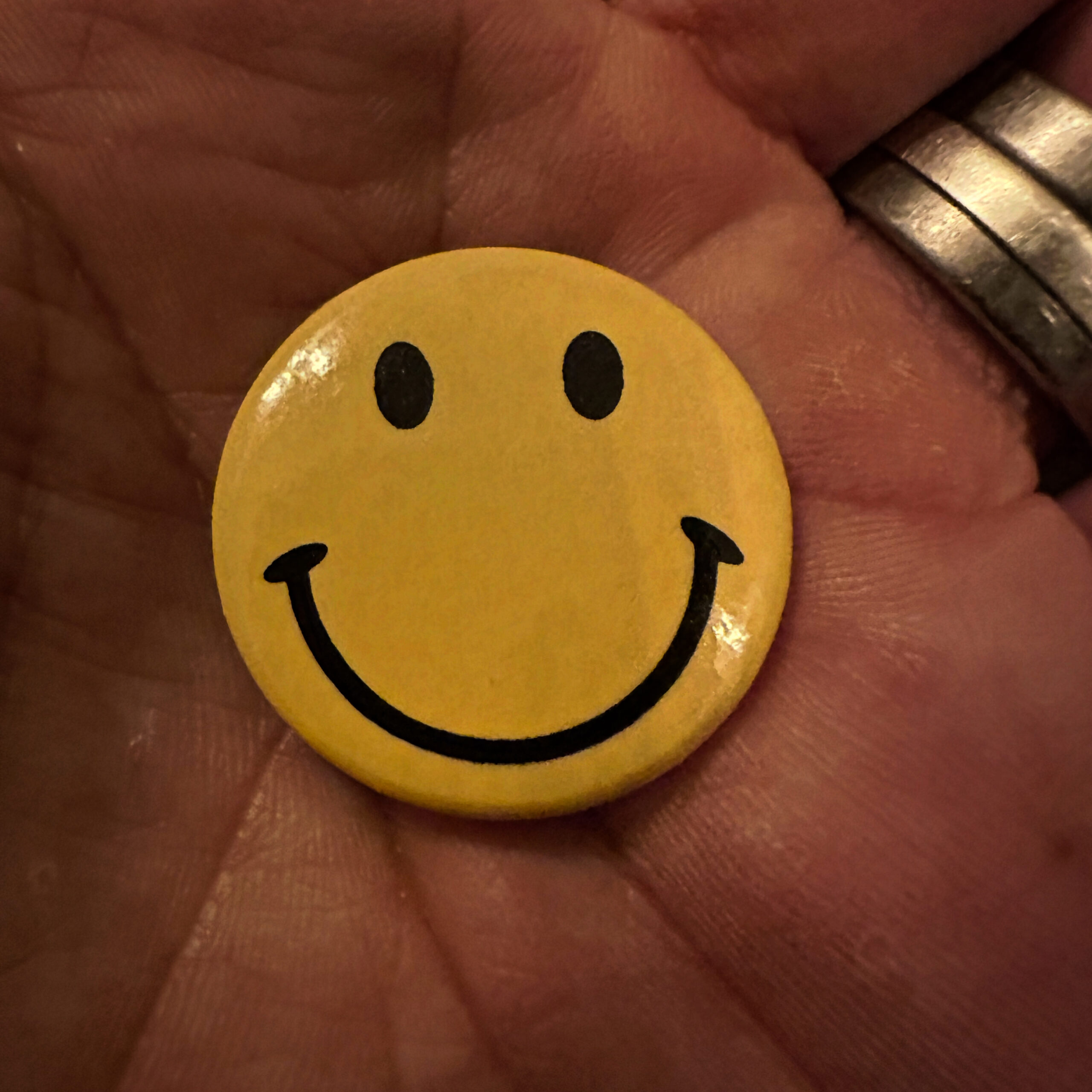
Smiley Culture
Few symbols are as instantly recognizable—or as cheerful—as the classic yellow smiley face. But behind that simple grin lies a fascinating story that began over 60 years ago.
I was given this badge when we went down to dj at Headstart at Turnmills in London many moons ago. I’ve held onto it in the best spirit it was intended. That chap still owes me £136. Anyway, back to the smiley…
Back in 1963, a cheerful little circle changed the world. A Massachusetts insurance company (yes, really) hired artist Harvey Ball to create something to lift employee spirits after a merger. In about ten minutes, he doodled the now-famous yellow smiley face — two dots for eyes, a big black smile, and a whole lot of sunshine. He earned just $45, and the design wasn’t trademarked. See what I mean about people being ripped off for their talent?
Despite its now well-documented journey through the 60s and 70s, I first came across the smiley badge in the 80s and the acid house movement. My brother sent me a cassette of Acid House music (it’s still in a box until I can get a tape machine). I was still a young thing but could see that this was a thing, a complete culture switch.
As a teenager in the 80s, I had grown up going to the football and seeing first hand, the casual scene and all the nonsense that came with it. Then Acid House hit.
The scene is well documented by many more clever people than me but the world changed. People came together.
It wasn’t all down to the smiley face. You can all make your own assumptions about the reasons why football fans stopped fighting for a time. You can come to your own conclusions as to why, for a while, people chose love over hate.
The smiley was just a symbol, not a solution.
You can always ask me anything.
Drop me line – ali@ali-campbell.com


